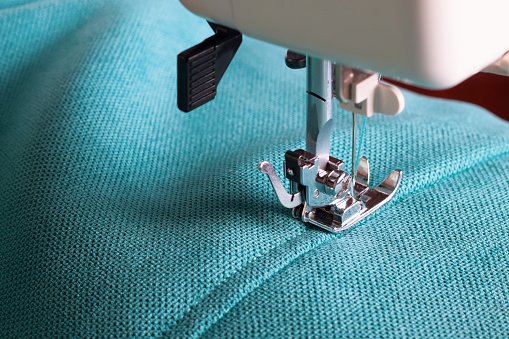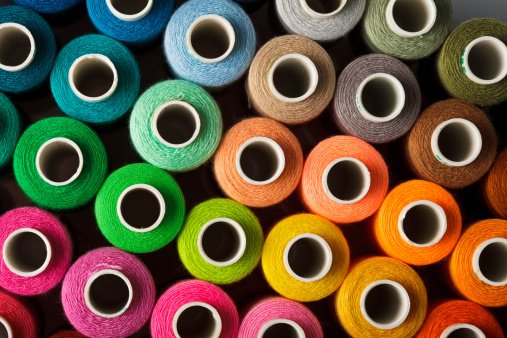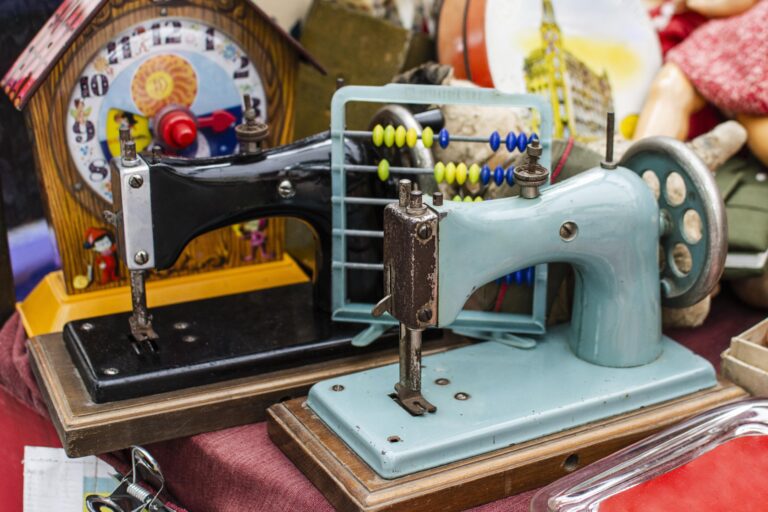7+ Smart Ways To Pick The Right Sewing Thread: Beginners Guide
Sewing threads can be found easily both offline and online. Due to their diverse compositions, strengths, colors, and other features, different threads are used for various stitching operations.
Choosing the right thread and needle size is the first step in good stitching. Ultimately, using inferior thread is never a good option because it can split and knot and won’t effectively hold seams together over time.
In this article I will be explaining the 7+ smart ways to pick right sewing thread that is perfect for your project.
Cotton
For natural fiber materials like cotton and linen, cotton thread is a great all-around option. It holds up well and is safe to use with projects that may come into contact with strong heat (such as oven mitts or clothing that may be often pressed).
Cotton threads come in a variety of weights, from heavy-duty to fine, and are frequently combined with synthetic fibers, especially in “all-purpose” threads, which you can probably find at your neighborhood craft store.
Cotton is generally a suitable option for the majority of tasks, however in some cases it could not be the best thread. But if you’re in a hurry, choose a thread made of cotton or a cotton-blend in the right weight for your cloth.
Polyester
Polyester thread is a versatile alternative that works well with synthetic-fiber-based fabric. Pure polyester thread can eventually cause problems because it has less give than cotton thread.
Natural fibers will wear unevenly in comparison to a polyester thread, and your material may start to disintegrate when the polyester breaks through the weave. In contrast to cotton, it is heat resistant and does not shrink.
In addition, it has the advantages of being widely accessible in a large variety of colors and being less expensive than other thread kinds.
Silk
High-end sewing, such as that used to create tailored clothing and bridal apparel, frequently uses silk threads. It is exceedingly fine, glossy, and silky, but surprisingly robust considering how fragile it is.
When stitching silk fabric, always use silk thread. It’s also a wise choice for working with fine cotton, linen, and wool because, as a natural fiber, it complements the stretch and give of these fabrics and offers a superior finish.
Because it’s fine enough to prevent creating holes in your work, it’s also a fantastic option for basting delicate items. Finding silk threads that are compatible with your projects when shopping at your neighborhood craft or sewing store could be challenging.
Have a fabric swatch on available, and think about visiting a specialty shop or ordering a variety of threads online to locate precisely what you need. Finding the ideal silk thread is worth the effort when working with finer textiles.
Nylon
Strong, long-lasting nylon works well for robust applications like canvas or leather. It comes in a variety of weights, from extremely delicate to extremely thick, and is frequently used in upholstery work.
The thinnest varieties are the softest and are occasionally marketed as monofilament or invisible thread (for more information, see the next section!).
However, because it is more susceptible to UV damage than polyester, it is not a good option for outdoor furniture that is constantly in the sun.
You should never use it for applications where melting could be a problem because it will also melt in even moderate heat.
Monofilament
Monofilament thread is created from a single strand of synthetic fiber, most frequently nylon or polyester. It is also known as “invisible thread,” and it is available in “smoked” and entirely transparent types that help it blend into either light or dark materials.
It’s perfect for tasks like quilting over fabrics with a lot of contrast because a thread that matches one place would stand out noticeably from surrounding materials.
It has a poor reputation in some sewing communities because, when it was initially developed, it was too thick and robust, straight from industrial sewing environments.
Home sewers discovered that it could easily cut right through the fibers of the textiles they were using, wasting hours of labor.
Today’s monofilaments are made to be used with a variety of materials, albeit different brands will obviously have distinct benefits and drawbacks. For a comparison of six different types, take a look at the table below.
Metallic
Ever wonder how ancient kings and queens obtained the stunning gold embroidery on their clothing? Actually, the method for creating thread-of-gold hasn’t changed since then.
Back then, normal thread was coiled around a core of gold that had been pounded into extremely thin sheets that were then sliced into tiny strips. We still employ the same method today, but instead of employing gold or other precious metals, we now utilize strips of synthetic foil.
The end result is a gorgeously glittering thread that can be used for embroidery as well as other types of ornamental sewing.
As the metallic wrapping is mainly cosmetic and subject to severe wear, it is not recommended for structural sewing.
Make sure you’re using a needle with a wide enough eye because that’s likely the cause of any thread snagging or unraveling you experience.
Floss for Embroidery and Perle Cotton
The direction your thread twists is probably something you haven’t given much thought to unless you’ve ever spun your own yarn or thread. Sewing machine thread is twisted in a leftward direction.
Z-twist threads are what they are called. However, a lot of the fibers used only for hand stitching are right-twisting S-twist threads. These include fabrics like perle (or pearl) cotton and embroidery floss.
Both of these cotton threads are suitable for a variety of hand sewing crafts, from crazy quilting to require painting, despite the fact that they are not intended for use with sewing machines. Embroidery floss is a six-stranded, easily separateable “divisible” thread.
This implies that you can stitch with any number of strands—from one to six—to achieve the desired result. Contrarily, perle cotton cannot be divided and is intended for use as a single strand, despite the fact that it is really formed of several strands that have been twisted together to form “plies.”
Its texture makes it better for some embroidery stitches (such chain stitches and edge stitches) and less suitable for others because it is more tightly wound than embroidery floss (like satin stitch and long-and-short stitch). Check out this handy resource for a detailed breakdown of the various embroidery threads.
Elastic
Elastic thread has a lot of stretch and rebound, just like the name implies. It takes some getting used to and is often used to create flexible gathers and shirring in fabrics.
You must properly wind the bobbin by hand without stretching the thread because it is only ever used in the bobbin of your sewing machine. This is the secret to starting your shirring off right.
Make sure you never skimp on this step since winding elastic thread on a sewing machine might potentially damage your bobbin because the elastic rebounds and overloads the bobbin.
new to the process as a whole? Here are some more pointers for making the ideal shirring.
Wool Woollen thread is a little bit of an anomaly in the realm of machine sewing. Due to its relative stretchability and extreme heat sensitivity, it is mainly utilized as decorative material (think about the last woollen sweater that accidentally made its way into the dryer and you get the idea).
But hand sewing frequently uses it, and it provides a terrific choice for textured embroidery, edging, appliques, and more. Wool and wool blend fibers are available for sewing machines, but you’ll probably need to put in some effort to find them.
Be ready to experiment a little, and make sure you always follow the proper maintenance guidelines to prevent hurting your finished items!
Bobbin
Bobbin thread is a thin thread made especially for machine embroidery, appliqué, and other decorative stitching on the backside.
In the case of ornamental threads like metallics, it’s a less expensive option to use on the wrong side of the fabric, where artistic appeal isn’t important. Its narrow shape prevents dense machine stitching from becoming excessively bulky and rigid.
Due to its modest weight and low likelihood of causing fabric damage, it is occasionally used for basting.
Conclusion
As a beginner, having a little more faith in your ability to choose the ideal thread for your upcoming project?
Making the appropriate choice might be the difference between a gorgeous finish and a product that appears to be overly homemade, even though it’s not necessarily a difficult one. If you follow these 7+ smart ways to pick right sewing thread, then you are sure to see your project as fun.


